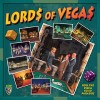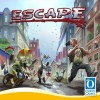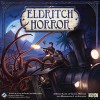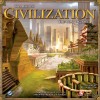Fuzzus
gamer level 4
1903 xp
1903 xp
followers
13
13
Use my invite URL to register (this will give me kudos)
https://boardgaming.com/register/?invited_by=fuzzus
profile badges

...
...
recent achievements

Baron / Baroness
Gain 10 total followers
Gain 10 total followers

Advanced Reviewer
Review 13 games and receive a total of 980 positive review ratings.
Review 13 games and receive a total of 980 positive review ratings.

Gamer - Level 4
Earn Gamer XP to level up!
Earn Gamer XP to level up!

I'm a Real Player!
Claim that you have played a game today by clicking the "Played Today!" button on a game page 25 times.
Claim that you have played a game today by clicking the "Played Today!" button on a game page 25 times.
Player Stats
Critic (lvl 3)
1325 xp
1325 xp
Explorer (lvl 1)
165 xp
165 xp
Professor (lvl 0)
85 xp
85 xp
Reporter (lvl 1)
155 xp
155 xp
About Me
I love all kinds of games -- from simple, silly party games to intricate, time-consuming strategy epics. But I find my favorite games usually have a good mix of crunch and fluff (e.g. Small World, 7 Wonders) or interesting player interactions (e.g. The Resistance, Betrayal at House on the Hill). Aside from board games, I dabble in the occasional casual Magic draft with friends and every few months we try to scratch our PnP itch -- most recently with the new edition of Shadowrun.





































































Codenames
Codenames is a party word game that seems very basic at first glance. 25 cards with a single word on each of them are arrayed in a 5×5 formation on the table. There are two teams, red and blue, and each team has one Codemaster who sees a card that maps out the 5×5 grid in blue, red, neutral, and one assassin square. The Codemaster gives a one-word clue that applies to as many of the 8 (or 9, if their team went first) colored squares on the grid as possible and gives a number; for example, the clue “cold: 3” could be used for the words “freeze,” “winter,” and “shoulder.” The Codemaster’s team tries to guess as many of the words as possible, but if they guess a neutral square or one of the other color, their turn immediately ends and the other team’s Codemaster gives a clue. If a team guesses the assassin square, they immediately lose the round.
It’s super-easy to learn and fun to play for the first few rounds, but you expect that it will get old pretty quickly. But it doesn’t! Somehow, Codenames is fun to play again and again, for both hardcore and casual gamers, and the only thing that stopped us on our first night playing was that people had to go home because it was too late. If we were all ten years younger, we’d probably be playing into the wee hours of the night, and the sun may well have caught us still shouting and laughing.
Codenames’ presentation is pretty solid, though the theme of the cards being the code names of potential agents doesn’t bring a whole lot to the game. There are PLENTY of word cards (two-sided so you don’t have to bring out a new set every time!) and the agent chits are cool-looking and, in a particularly nice bit of inclusiveness, double-sided with a male agent on one side and a female agent on the other.
Codenames looks like the kind of game that would be fun once or twice and then collect dust on your shelf, but I’m sure we’ll be bringing this little gem out at parties for a long, long time.